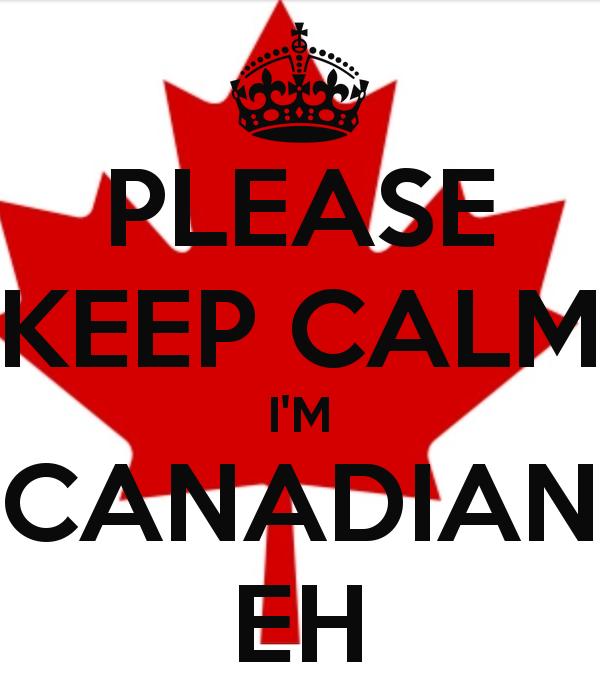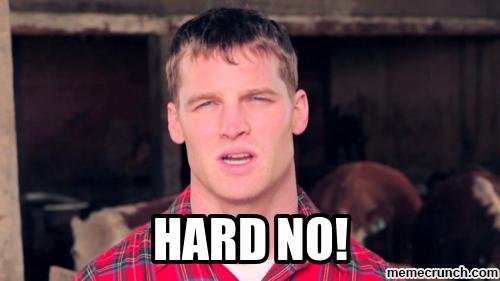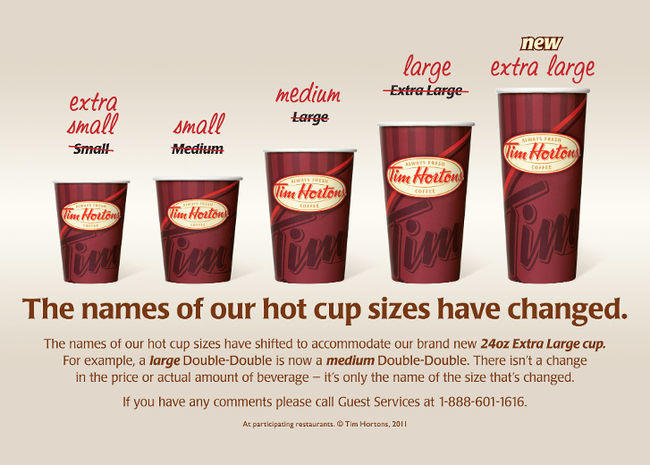I know, I haven’t written a Take in forever. Sorry folks, #life happens. But fear not, there are a few on the way in the near future.
I have a little time today and after recently visiting some family, I was inspired to do a little Take that covers some of the common and stereotypical Canadian lingo/sayings. Why? Because it’s funny and you may get a kick out of it too, and perhaps even find something useful. Why not spice up the good ol’ vocab, am I right?
Of course, I think it’s standard for me to note that not all of us Canadians talk in that silly little accent, and certainly not all of us use this language, but I was surprised to see just how many of my fellow Canadians actually subconsciously do. So, without keeping you in further suspense, here’s some True North and Strong Canadian lingo!
Sally/Skirt
The use of the term “Sally” and “Skirt” is intended to be an insult. Yep, it’s an insult, try not to feminist rage over it, but it is. If someone ever tells you to quit being a “Sally” or a “Skirt”, they are literally telling you to stop being a wimp or a whiner. Or, in more common American terms to: “stop being such a pussy.”

Obviously, the term comes from the concept that acting whiney or wimpy is associated with being a girl, similar to the common use of the term “like a girl.”
Don’t get too bent out of shape though, it’s just old Canadian country speak.
“Jeez, would ya stop being such a Sally aboot it? It's fuckin' embarrassing.”
“Quit yer’ squealing, you’re acting like a total skirt.”
Darts/Havin’ a Dart
If you ever hear any Canadian going on aboot needin’ a dart or asking you if you have one, they aren’t talking about the kind you toss at a peg board at the bar. They’re talking about cigarettes.

Obviously the term is likely derived very much from the popular bar game, where many old school Canadian hicks pair beers with a good ol’ cigarette.
“Don’t suppose you’ve got a dart to spare?”
“Fuckin’ Leafs lost again, damn it, I’m havin’ a dart. Fuck this.”
Deke or Deke Out
Speaking of hockey, if you ever hear of anybody dekein’ out while you’re watching a hockey game, the Canuck speaker is referring to a “fake out”, essentially.

A deke out is literally when you’re making like you’re about to go one way or do one thing, then change your position and tactic at the last minute, leaving your pursuer or opponent confused.
“He was takin’ the puck over center ice with the number niner ridin’ his blades, then deked him out last minute and scored on net.”
Deke or deke out doesn’t just refer to hockey however, you can also deke people out in other situations where faking out is appropriate. Also, deke is a common term that can also be used to describe sucker punching someone.
“He deked him right in the head while he was havin’ a wiz behind the bar, cheap fuckin’ shot if you ask me bud.”
The Use of: Eh?
Literally, all eh is used for is to emphasize a point or a question or to gain acknowledgement about something you said or agreed with. You can use it alone or in conjunction with both a genuine question and a rhetorical one, though the ladder is more common. Think of it in the same way you would use “I know, right?” It’s that simple.
“No kiddin’, eh?”
^ Providing emphasis/seeking acknowledgement of a statement, identical to the use of “I know right?”

It can also be used in the same context as “Don’t you think?” Or “Do you agree?”
“That there was a bad fucking storm eh?”
Hoser/Hose-head & Keener
You’ve probably heard hoser a few times when seeing Canadian stereotypes portrayed in movies, but a lot of the times this term is used in a far more endearing way than it was ever intended. It’s the abbreviated form of hose-head, which literally refers to an unsophisticated person or even a hick. That’s right, it’s a derogatory term.
“He’s a right hose-head that one. He wouldn’t know the difference between a damn TV dinner and a hot meal made at mum’s if you wrote it down plainly in mashed potatoes.”
“Guy can’t be bothered to buy his own damn darts so he’s always tryin’ to bum em off me whenever I spark one up. Damn hoser needs to get a fuckin' job.”
The same can be said about the use of keener, which isn’t as prevalent in popular culture when it comes to stereotyping Canadians, but it is a part of the commonly listed slang. A keener refers to an ass-kiss, brown noser, or suck up – to use other popular slang terms. Basically, somebody who schmoozes somebody for some kind of benefit, I’m sure you get the gist.
“I tell you, that there new guy is a damn keener if I ever saw one, boss can’t go two steps and take a stumble without him half ready to lick his arsehole.”
Canuck & True North and Strong
These two are pretty simple. A Canuck literally is just a nickname for a Canadian. We even have a hockey team named after it.

As for the “True North and Strong”, this isn’t as commonly known as most of the other slang terms I’ve taught you today. As a matter of fact, most sites won’t list this one, even though I’ve personally heard it a few times in my life as a Canuck myself.
Obviously derived from a verse from the Canadian National Anthem, to say that you are “True North and strong” literally means that you are a proud Canadian. You can use both terms in conjunction with one another, which is why I included them together:
“I tell you what bud, I’m damn well in love with my girl. She’s a right True North and Strong Canuck, through and through.”
Hard/Hard No
Not a super popular one, but still present in the lingo, hardno is no different than saying “hell no” – it applies emphasis on your stance. However, it isn’t just as simple as that, you can use to express personal dislike of something as well.

To emphasize your stance:
- “Hey there bud, how’s aboot we maybe go to a gay bar? Not for the dangly parts, but there’s a good chance we’ll get free drinks.”
- “Hard no!”
To express dislike:
“I tell ya, it just ain’t right how you can have yourself a good night at a bar and leave with a girl only to wake up and find out she wasn’t an eight after all. She was a right hard no.”
Lastly, but not least … let’s talk COFFEE.
Tim’s/Ordering Coffee
Most can assume that if someone says they’re making a run to Tim’s or Timmy’s they’re referring to the Canadian coffee & eatery chain Tim Horton’s. And like Starbucks, there’s “proper” ways to order your coffee, starting with the sizes.

There are no Italian terms here, just straight forward ass sizes:
Extra Small: A 6 oz cup of coffee.
Small: A 10 ounce cup of coffee.
Medium: A 15 oz cup of coffee.
Large: A 20 oz cup of coffee.
Extra Large: A 24 oz cup of coffee.
(These sizes don’t apply to cold beverages. There’s just small, medium, and large.)
Now, how Canadians order their coffee depends on what you get. Of course, if you have ratios that don’t match, you would just say how many creams, milks, sugars or sweetners you wanted. However, if you want matching ratios, there are proper terms for them.

Regular: 1 cream and 1 sugar. You can also ask for a Regular with milk or sweetner. Just ask for a regular with milk, or a regular with sweetner, etc.
Double-Double: The most well known and ordered coffee ratio, a double-double is exactly what you would assume: its two cream, two sugar, or variants of milk and sweetner. It’s the most popular way to have your coffee in Canada, and a great way to earn someone’s approval.
"There's no greater keeper than a girl who wakes you up in the mornin' with the magic words: I'm going to Tim's, large double-double?"
Triple-Triple: Seeing a trend yet? Well, you guessed it: a Triple-Triple is 3 creams and 3 sugars, and I can promise you that it’ll probably give you a belly ache, but it’s geared more towards skirts who can’t handle their coffee too hot or too bitter. Of course, you can have er' with milk and sweetner if you want people to think you're even more of a skirt.
Four-by-Four: Now you’re into super Sally territory once you get into four-by-fours. You’re likely going to get side-eyed by a few Canucks if you’re having 4 creams and 4 sugars in your coffee. Like all of the coffees, you can have variants with milk and sweetner.
Once you start going past a four-by-four, you run the risk of offending Canadians who love their Tim’s and take their brew seriously, so you might just wanna get yourself an iced cap or something Sally.

And that there my friends is my myTake on Canadian lingo. Hopefully you found it entertaining, I certainly enjoyed writing it, and this way if any of you really do flee America if Donald Trump gets elected, you won't be running into Canada not knowing some of the slang.
TGIF and have yourselves a good one.
Most Helpful Opinions